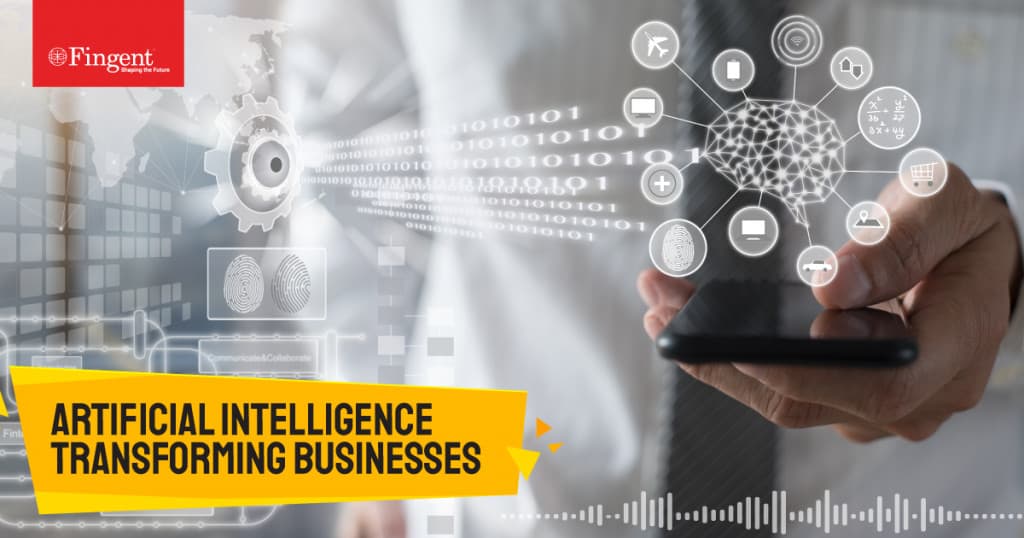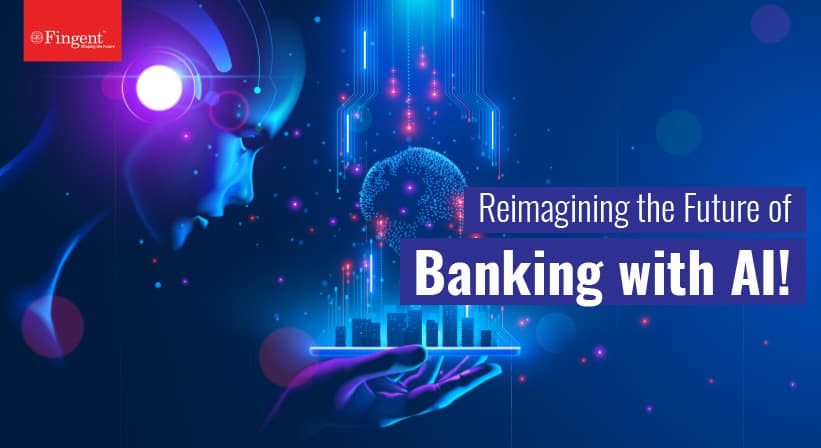The Convergence of Edge Computing and AI: Why Is It Important For Your Business?
The popularity of edge computing and artificial intelligence (AI) has risen in recent years due to the widespread adoption of mobile technology and the Internet of Things (IoT) by various industries. The Linux Foundation’s State of the Edge Report 2021 predicts that the global market capitalization of edge computing infrastructure would reach $800 billion by 2028. If edge computing garners a wider attention span, the number of enterprises investing in AI is also growing year over year. According to the State of AI 2021 Report, the global AI funding witnessed a whopping 108% increase in 2021. More than 54% of the organizations surveyed by McKinsey in 2021 said that they have adopted AI in at least one function.
Individually, both AI and edge computing help businesses in incredible ways and hold immense potential for future development. Many forward-looking organizations are investing in these two technologies as part of their digital transformation journey. “Two heads are better than one”, goes the saying. True to this, many enterprises and technology champions are discovering new opportunities by combining edge computing and AI, or Edge AI. In this blog, we’ll see how edge computing and AI are being put to work together and discuss some use cases that will take AI applications to the edge.
Read more: Future-proof your business with 5G, edge computing and cloud
What is Edge Computing?
Edge computing refers to a distributed computing framework that brings the deployment of computing and storage resources closer to the data sources, such as local edge servers or IoT devices. By bringing enterprise applications closer to the data sources, edge computing offers a multitude of business benefits; including faster data processing and insights generation, better response times, and enhanced bandwidth availability.
In edge computing, all your device-generated data is processed and analyzed close to the source where it’s created. By preventing your data from traveling over a network to a centralized or cloud data center, edge computing reduces latency and improves bandwidth availability.
Example: Electric vehicles (EVs) leverage edge computing for data aggregation and insights generation, which help optimize charging stations and monitor the health of EV batteries.
Read more: 9 examples of artificial intelligence transforming business today
What is AI?
Artificial Intelligence or AI refers to machine intelligence, where a computer-controlled (software-programmed) machine simulates human intelligence to perceive its environment and take corresponding actions that help the machine achieve its goals. AI uses machine learning and deep learning techniques to churn robust input datasets (labeled training data) and enable rapid problem-solving.
The content recommendation systems used by Amazon, Netflix, or YouTube and Google’s advanced web search engine are some of the leading examples of AI today. The growth of artificial neural networks and deep learning technologies enable AI systems to process massive amounts of data at an incredible pace and predict future states with exceptional accuracy.
AI-powered applications command a larger share in today’s enterprise landscape. AI helps banks, insurance companies, and financial institutions with fraud detection. AI is being used by conversational bots to enhance customer service. Smart assistants like Siri and Alexa leverage AI to improve customer experience. Hospitals and healthcare providers use AI-embedded applications for making clinical decisions and delivering remote patient care.
Case Study: MUSA, Fingent’s AI-powered virtual assistant minimizes day-to-day workplaces struggles related to PeopleOps and DevOps. Read Now!
Edge AI: The Next Wave of Enterprise Digital Transformation
AI applications give the intended results by relying on seamless data transmission and computation of complex ML algorithms. Edge computing helps move AI systems close to the source where the data is generated. When AI computation is done at the edge of the network, next to the data source, it gives more accurate and desired results. This process has given rise to a new computing paradigm: Edge AI.
In edge AI, both data generation and computation take place at the network’s edge, instead of sending and processing data in a faraway cloud computing center. Here, “edge” of the network could connote anything – mobile devices, retail stores, factories, hospitals, medical equipment, traffic lights, autonomous vehicles, and so on.
Read more: Quantum vs. Neuromorphic Computing: What Will the Future of AI Look Like?
Here’s how your business can benefit from the adoption of edge AI:
1. Low-power, offline capabilities
Traditional AI applications require enormous amount of processing and computational power to operate some of the complex ML algorithms. Distance from the cloud servers often affects the deployment of AI systems in remote locations. Edge computing helps overcome this challenge as the technology is designed to operate in low-power, offline environment. For instance, blockchain and smart contracts that rely on decentralized ledger technology (requiring no central broker or mediator) can independently run on computation-heavy AI algorithms within the edge devices.
2. Faster computing and real-time insights
Edge AI enables your applications to respond to users’ requirements in real-time. This is because edge computing analyzes data locally, close to the source where it’s generated, instead of a remote cloud data center, which usually delays responses due to long-distance communications.
3. Better data security
If AI ensures the privacy of data that needs to be analyzed by securing if from getting exposed to cyber miscreants, edge AI adds an additional layer of privacy by containing that data locally. Edge AI uploads only the insights and analysis to the cloud and even anonymizes the data uploaded for training purposes to protect user identities. Thus, edge AI enables businesses to ensure data regulatory compliance.
4. Constant improvement
AI models can improve their accuracy when they get access to more training data. When an edge AI application confronts data that it is unable of processing, the application will upload the data so that it can retrain and learn from it. Since the new data set is captured right at the production edge (without any transmission delays), the edge AI application will quickly learn from the new data, ensuring constant improvement through learning.
5. Cost reduction
Offline capabilities and decentralization enable Edge AI to process data without larger internet bandwidths. This reduces your networking costs significantly. Enhanced performance of AI-enabled applications keeps your operating costs down.
Potential Use Cases of Edge AI
The rapid growth of intelligent applications and the increasing enterprise workloads on cloud are driving the adoption of edge AI. The edge AI software market is estimated to be worth $1,835 million by 2026, states a recent study. The amalgamation of edge computing and AI has led to many breakthrough advancements in recent years. Here’re a few potential uses cases of edge AI:
Healthcare
AI-powered medical devices and instruments at the edge deliver on-demand insights for clinicians to make crucial and faster decisions about patients. During surgical procedures, surgeons can rely on the ultra-low latency surgical videos streamed into AI-powered medical data processing applications to quickly detect abnormalities and identify chances of excessive bleeding. Devices out of the operating room, such as CT and MRI imaging scanners, DNA sequencers, cryo-electron microscopy, and other life science instruments also benefit from edge AI.
Energy and utilities
Edge AI models can leverage past insights, weather patterns, grid conditions, and other crucial meteorological information to create advanced simulations that help define new ways to improve the generation, distribution, and management of energy resources. This facilitates intelligent forecasting in the energy sector, which helps prevent discontinuous power and energy supply affecting the day-to-day lives of people.
Manufacturing
Edge AI applications can collect data from sensor-enabled devices installed across the factory floor and process the same in real-time, with ultra-low latency. This advantage gives rise to new use cases in manufacturing and distribution, where real-time and rapid data processing is required. Examples include detecting workplace hazards, finding product defects in assembly lines, flagging machines that require attention or human intervention, and more.
The list of edge AI use cases keeps growing every day. Smart virtual assistants, voice commands that replace text-based searches, autonomous vehicles, self-driving cars, video surveillance, motion detectors, and industrial IoT security are a few typical use cases that could be enhanced through the integration of edge AI. Fingent helps build faster, reliable, and cost-effective enterprise applications powered by edge and AI.
Are you ready to explore the possibilities of Edge AI in your business operations? Contact us today!
Stay up to date on what's new

Recommended Posts
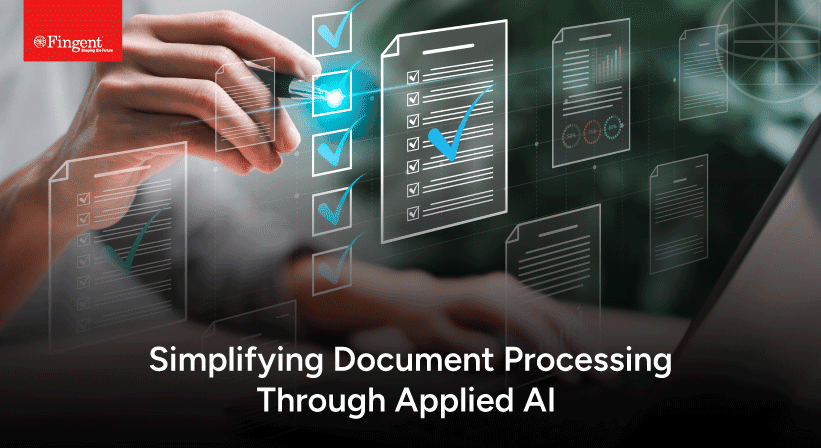
18 Apr 2024 B2B
Applied AI For Document Processing
"It's becoming increasingly clear that AI is the future, and almost everything else is a sideshow." - World-renowned computer scientist Geoff Hinton AI has taken over almost every aspect of……
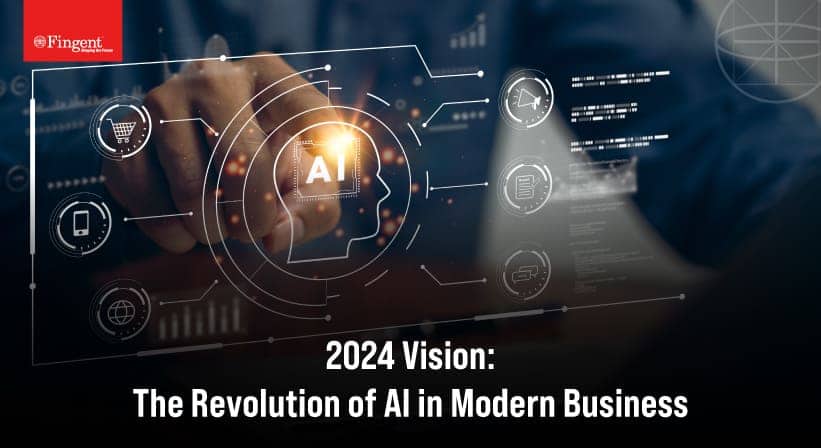
10 Jan 2024 B2B
AI Trends Set to Transform Businesses in 2024
In the dynamic realm of modern business, the profound impact of artificial intelligence (AI) continues to unfold, reshaping industries and redefining conventional practices. As we step into 2024, the transformative……

26 Nov 2023 B2B
Finding Success in the Aviation Business with AI
“Aviation is the branch of engineering that is least forgiving of mistakes.” - Freeman Dyson, British-American theoretical physicist and mathematician. The truth in that statement is sobering indeed. The precision……
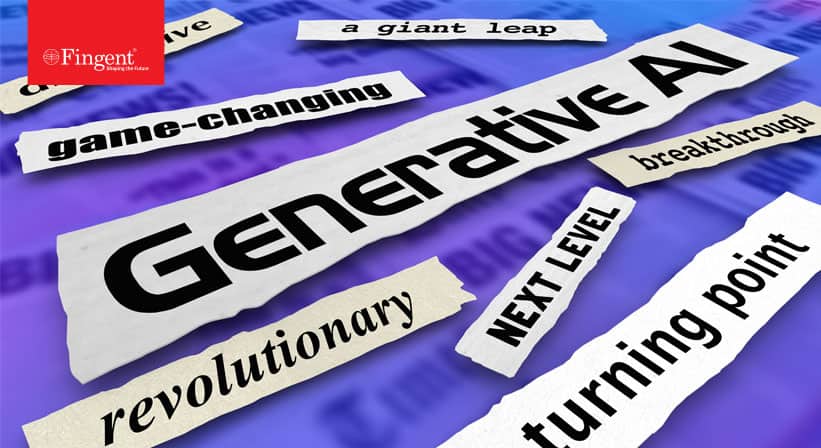
27 Oct 2023 B2B
Generative AI – Magnifying the Power of AI in Business
Are you sick and tired of performing the same monotonous task every day? Well, if your answer is yes, then Generative Artificial Intelligence can benefit you. Technology is evolving at……
Featured Blogs
Stay up to date on
what's new



